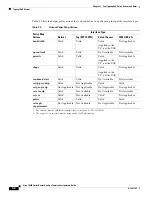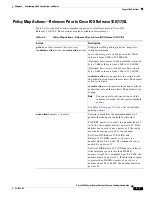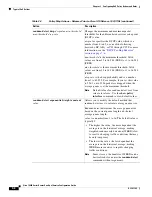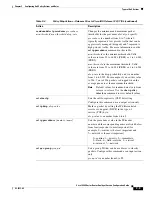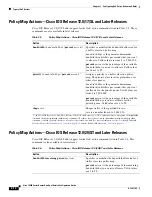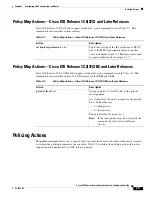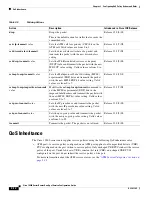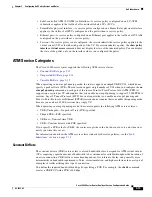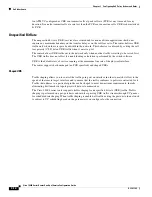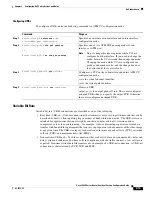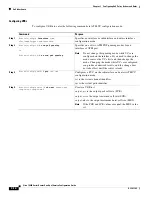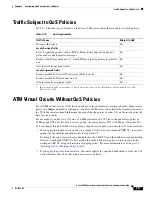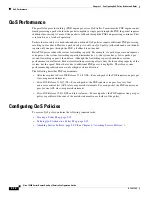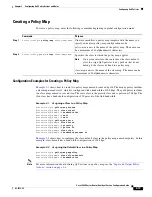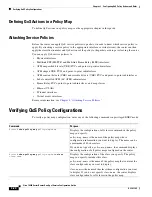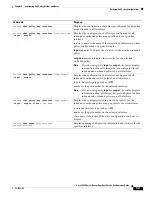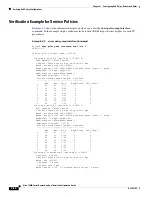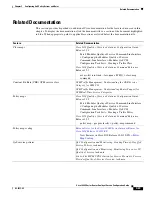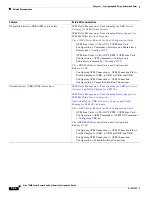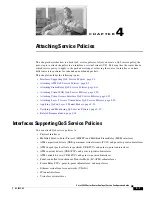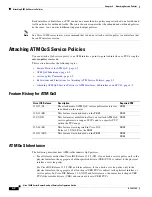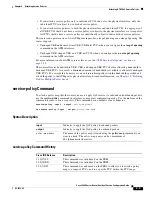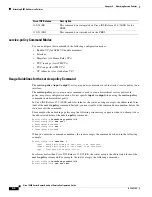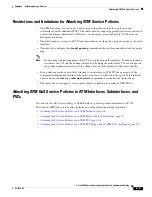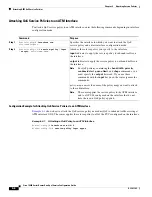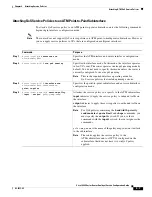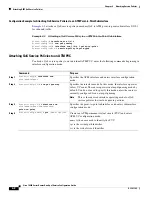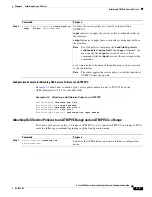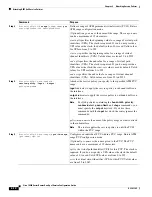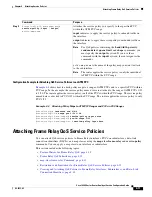
3-20
Cisco 10000 Series Router Quality of Service Configuration Guide
OL-7433-09
Chapter 3 Configuring QoS Policy Actions and Rules
Verifying QoS Policy Configurations
Defining QoS Actions in a Policy Map
To define QoS actions in a policy map, see the appropriate chapter in this guide.
Attaching Service Policies
Before the router can apply QoS service policies to packets, it needs to know which service policy to
apply. By attaching a service policy to the appropriate interface or virtual circuit, the router can then
apply the classification rules and QoS actions of the policy to the packets arriving at or leaving the router.
You can apply QoS service policies to:
•
Physical interfaces
•
Multilink PPP (MLPPP) and Multilink Frame Relay (MFR) interfaces
•
ATM unspecified bit rate (UBR) PVCs and point-to-point subinterfaces
•
ATM shaped UBR PVCs and point-to-point subinterfaces
•
ATM constant bit rate (CBR) and variable bit rate (VBR) PVCs and point-to-point subinterfaces
•
Label-controlled ATM (LC-ATM) subinterfaces
•
Frame Relay PVCs, point-to-point subinterfaces, and map classes
•
Ethernet VLANs
•
IP tunnel interfaces
•
Virtual access interfaces
For more information, see
Chapter 4, “Attaching Service Policies.”
Verifying QoS Policy Configurations
To verify a policy map configuration, enter any of the following commands in privileged EXEC mode:
Command
Purpose
Router#
show policy map
policy-map-name
Displays the configuration of all classes contained in the policy
map you specify.
policy-map-name
is the name of the policy map whose
configuration information you want to display. The name can be
a maximum of 40 characters.
If you do not specify a
policy-map-name
, the command displays
the configuration of all policy maps configured on the router.
Router#
show policy-map
policy-map-name
class
class-name
Displays the configuration of the class you specify. The policy
map you specify includes this class.
policy-map-name
is the name of the policy map that contains the
class configuration you want to display.
class-name
is the name of the class whose configuration you want
to display. If you do not specify
class-name
, the router displays
class configuration for all classes in the policy map.

